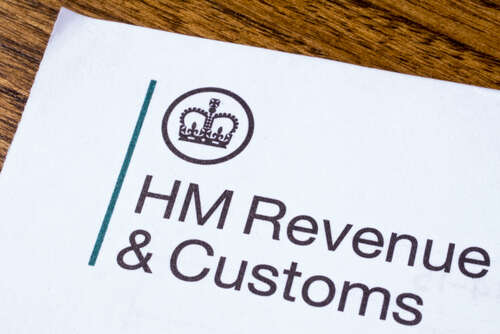
HM Revenues and Customs (HMRC) has published its latest strategy for digital transformation, which will see it through to 2025. It focuses on five objectives supporting customers – taxpayers and businesses – as well as furthering the government’s ambitions to grow the nation’s economy.

The tax collector says it has to get “technology right” in the face of external trends such as the use of artificial intelligence (AI) to detect tax fraud and digital identity services to enable people to log in and engage with staff.
Tech leaders within the department want to use technology to act as an “accelerator” for HMRC, so the public will see them as a “trusted, modern tax and customs department”.
“HMRC has come a long way over recent years,” said Daljit Rehal, HMRC’s chief digital and information officer. “We have much to be proud of in terms of how we’ve shifted services online as part of the government’s wider digital agenda.”
He added: “I want leaders across HMRC’s technology function to be able to make decisions with our vision in mind and be thinking about everything they do and whether it’s moving us in the right direction.”
The strategy comes less than a month after senior HMRC management attended a committee hearing with Parliament’s Public Accounts Committee (PAC), which explored why a National Audit Office (NAO) report had found that HMRC had delayed its ‘Making Tax Digital for Self Assessment’ programme four times since it was first announced in 2015.
HMRC digital transformation: more automation and ‘platforms’
According to the IT strategy, HMRC will enact tax policy and legislation through “scalable digital platforms” to enable them to “get things right” and do things a lot quicker.
The department says it will provide the technical capability to let customers access HMRC products and services they need by reorganising internally: “We recognise that technology can be a key enabler and accelerator for customer outcomes, however making effective use of technology can be hard.”
The taxman also wants to make the department a “great place to work”, providing staff members with tools to maximise the changes from the reorganisation as well as supporting hybrid working and other ways of working.
Automation, self-service and “other platform technologies” will play a part in maintaining consent from customers. According to the document, these technologies will be “secure by design to build a trusted, single view of taxpayers.” Data will also be automated to provide insight to “improve tax yield”.
The way the department is looking to expand its technology capabilities is by using a platform economy model, following what a lot of tech companies are doing such as Meta, Amazon and Salesforce. Rather than offering products to customers, this model focuses on offering platforms.
In its strategy, HMRC says it wants platforms to help provide a backbone for its “multiple business needs” while being both scalable and cost-efficient. It will also include the use of low or no-code platforms, which enable non-IT staff to create business applications.
“By providing ‘evergreen as a service’ platforms, with IT software and hardware that’s always up-to-date, we will enable new solutions and products to be built rapidly, created without a dependency on highly technical niche skills,” the strategy says. “We will become more agile and more impactful to serve our customers’ needs, whilst driving scale and efficiencies.”
More expert staff will boost HMRC digital plans
HMRC will require “business expertise and perspective” to understand the benefits and customers’ needs and wants, the strategy says, as well as the technical expertise to understand the software and how best to use it. As reported by Tech Monitor, HMRC spent over £150m on more than 4,000 full-time technology staff in 2022 as well as launching 15 new academies to train employees in cloud computing, data science and other disciplines.
The reorganisation will make the department more “customer-centric by design”, the strategy says, with teams across the organisation collaborating to deliver more efficient services at a lower cost to the taxpayer.
“We are focused on giving our teams across the organisation more control over our digital service offerings to customers, making them easier to adapt and evolve, and base decisions on real-time data,” the strategy says. “All the while, we are making sure the platforms they sit on are modern, reliable and flexible – to meet our customers’ needs for the future.”
Is HMRC making promises it can’t keep?
As reported by Tech Monitor, HMRC has been scrutinised by both PAC and NAO over delays to its Making Tax Digital programme, which the department has blamed on external events such as Brexit and Covid-19. Another issue arose in the legacy IT systems that HMRC uses and the lack of ‘work’ done to truly understand the complexities of migrating to a newer system.
But NAO also said that the tax man had been “unrealistic” with its original 2020 implementation deadline. The reason for this came down to the requirement for behaviour, administrative and technological change.
“Changes for Self Assessment were most ambitious in timing and scope: they were due to complete by 2018 including requirements for more frequent tax submissions from business taxpayers,” the NAO says. “The timeframes for [Making Tax Digital] were agreed before HMRC had fully explored the range of options.”
NAO also said it was still concerned about HMRC’s ambitions for Making Tax Digital, saying the scale of work remains uncertain.
“HMRC’s current plans indicate it has major work to complete on all the significant elements (restarting its pilot with business taxpayers, moving tax systems and records, and changing its internal processes), and this must all be done in parallel,” it said.






